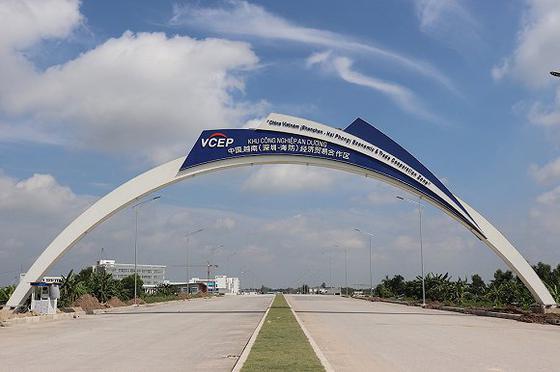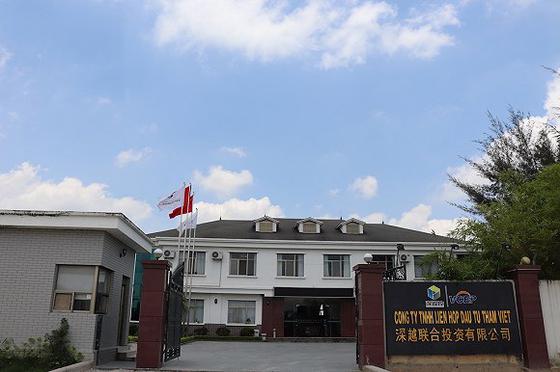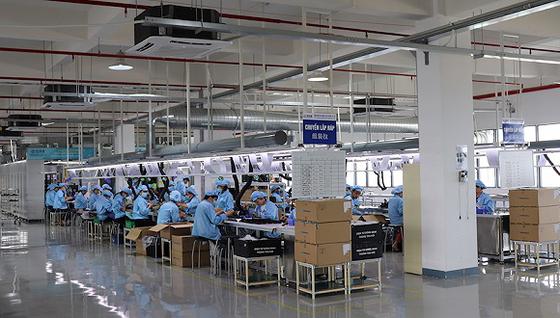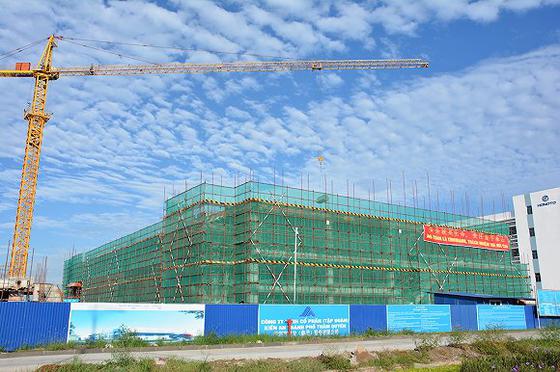In a mid-day of August in Hai Phong, people were ushered indoors by the scorching heat, and the street was quite as if a falling sound of needle could be heard. A glittering array of gray and white factory buildings were standing in serenity in a significant number of industrial parks dotted along the northern Vietnamese city of Hai Phong. In the outskirt of the city about 20 km lay foreign invested industrial parks of various scales from countries like China, Korea, Japan and Singapore.

Not far from the entrance of VCEP industrial park stood a two-level building served as the office of VCEP Investment Management Company, a prime stop for Chinese investors who were keen to expand their empire into Vietnam. The stained and aged door revealed a huge standing board at the epicenter with 3D illustrations of the industrial park, surrounded the board were six Chinese businessmen who were constantly nodding, responding to the vice GM’s introduction of the industrial park, and occasionally discussing with their peers.

In 10 minutes, the group of businessmen rushed along the long corridor to the conference room to settle down more details from water, electricity supply to taxes, etc. “To meet the urgent demand of our client, we’re in dire need of an overseas manufacturing base within the shortest time”. During the meeting, the group of businessmen spoke with urgentness to get everything settled down, and started manufacturing within the shortest time if possible.
The meeting last till lunch time when they had a quick refuel in the industrial park canteen before rushing to the next industrial park. Not long after their departure, another minibus slowly entered and here came another group of ten Chinese wearing the same red T-shirt, needless to say, the same t-shirt was an eloquent proof as a team from a Shenzhen tech company. As history repeated itself, the GM came and gave another thorough introduction of the industrial park before moving to the conference room. In about an hour, the second group of visitors left again.
The same story was carried on in VCEP since June this year with about three to four company group visits every day. As the only Sino-Viet industrial park in Hai Phong, VCEP was the prime destination for Chinese companies who were about to take the leap. Compared with last year, the number of Chinese companies visiting this year has increased by three to five times, with most of the visiting companies anxiously looking for a China Plus One alternative in Vietnam. Sometimes the anxiety has reached a level as if any vacant space would be quickly snapped up, equipment built, workers hired and the factory operated in a full swing as soon as possible.

The Overflowing of Chinese Factories
Sanhua Group in Zhejiang province of China was one of the pioneers that took the leap to expand their manufacturing to Vietnam. Mr. Xiaojun Xia, taking charge of the Group’s business operations in Southeast Asia, was entrusted with the responsibility to explore the manufacturing industry in Vietnam. This was his third time in Vietnam, and he was fully occupied with tedious procedures of factory setup.
Sanhua Group, a manufacturer of AC controlling components and parts, has ten factories in and outside of China. The components Sanhua Group manufactured have taken up 10% of global market shares, and in 2017 the sales has reached a setting record of CNY¥221 billion. The factories in China could no longer cater to the increasingly humongous demands. Besides, the key point was each factory specialized in different lines of products, making it complicated to cater to different markets at the same time. Simulated by growing risks of export regulations and challenges of international trade, the company decided it’s time to go overseas to Southeast Asia.
At the end of 2017, Sanhua Group has started the program of expanding overseas, and the first stop was in India. According to Mr. Xia, while they’re finalizing procedures for the land, conflicts erupted around China India boarder, and ironically the company had no way but to cease the plan. Not until the end of 2018, the company decided to restart the program, this time, with focus on Southeast Asia.
Within half a year, Mr. Xia and his team have set foot extensively in countries in Southeast Asia, including Thailand, Indonesia, Malaysia, Laos, etc. Finally the company decided on Vietnam. The funniest part was at the beginning of the quest, Vietnam was the first country to be taken out of the list with the media’s constant exposure of anti-Chinese movements held in Vietnam. Speaking of how things turned the other way around, Mr. Xia couldn’t help bursting into laughter.
In April 2019, Mr. Xia arrived in Vietnam with several visits to industrial parks around Ho Chi Mingh and Hai Phong. Finally, the company decided on Hai Phong with its proximity to China and a few other factors.
The first factor to consider while expanding manufacturing to Vietnam was to decide whether to rent a factory or build a factory, said Mr. Xia. Companies were allowed to buy land and build factories in Vietnam, however, the complete process was time-consuming. Another option was industrial park, where businesses could lease factory buildings or buy land to build their factories inside the park. For companies with long term plan in Vietnam, building their own manufacturing facilities was definitely the second to none choice.
With the company’s target of starting production within the end of this year, Mr. Xia decided to lease a factory building for three years while at the same time build their own factory inside the industrial park.
Different from Sanhua Group that has already taken extensive global presence, Huayi technology from Xiamen has chosen Vietnam as first stop for the company’s “Going Overseas” program. The company was one of the biggest manufacturers of protecting airbags for automobile industry. Since April 2019, the company has visited a significant number of industrial parks from the South to the North. The decision to finally settle down was made upon the visit to the coastal city of Hai Phong, which shared lots of common grounds with Xiamen. What’s neat about Hai Phong was the impeccable geographic location, which took only two days to transfer the cargo by sea to Shanghai, where a significant number of the company’s clients were based.

A month after the visit, Huayi signed the rental contract with VCEP though the factory was still under construction. “All the factories were rented out during our visit in April. Though the one we rented is still under construction, it’s progressing and we’re planning to start production in January next year”, said Mr. Zhou.
The leaders from Shenzhen Daotong technology Co. Ltd were making a much swifter decision than ever before and no one before. On 27th June, the company arrived in Hai Phong for a visit. Eight days later on 5th July, the company signed the contract with VCEP. The management’s growing concern about risks and challenges of exporting tech products from China has set the company on a tight agenda as they specialized in drones, smart code reader for automobiles, etc.
Speaking of the drastic challenges Chinese businesses faced this year and the quest in a foreign soil, Mr. Qu, CEO of VCEP, said, “Before most Chinese businesses hesitated a lot about going into the deal, now decisions are made very swiftly and factory buildings are quickly snapped up.” According to Mr. Qu, two decisive factors came into the decisions making process, one was renting fees and the other was transportation to the port. Most businesses would consider to make a temporary settle down once these two conditions were met.